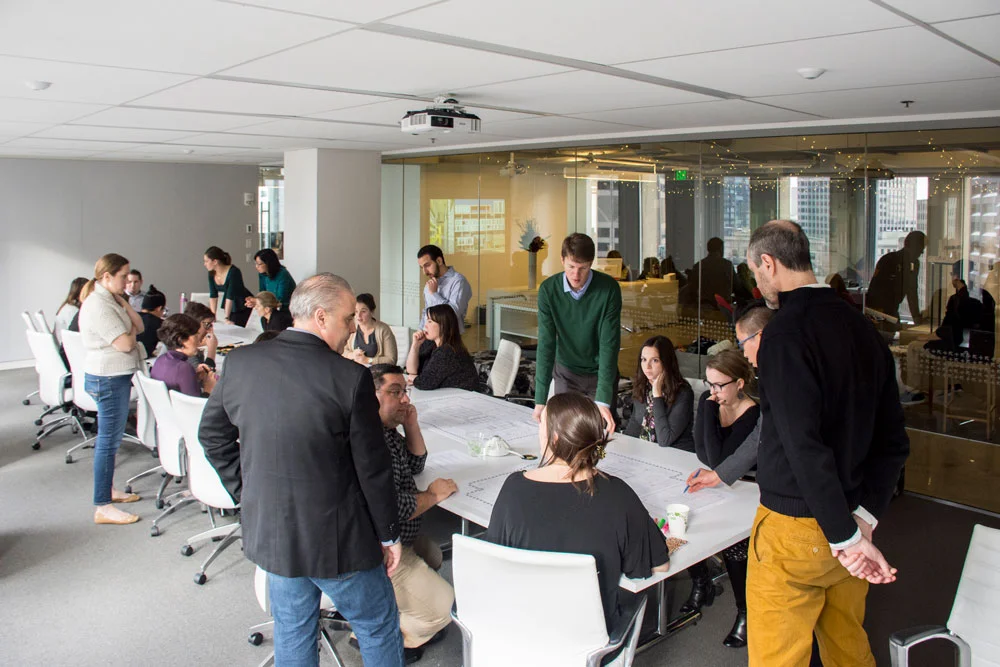A listening and brainstorming session in our Boston studio.
Here in Perkins+Will’s Boston studio, we’re using our office renovation—which we call Re/Fresh—as an opportunity to become a living lab for workplace design. As my colleague Brigitte Beltran previously wrote, it’s been an open, inclusive process that has united the whole office. In this post, I want to explore how we’ve been able to merge more than a hundred viewpoints into a single coherent design strategy.
There’s no question that, as opposed to a top-down process (where a few people are deciding on behalf of everyone else), an open process is best for an office like ours. First, people are inspired to devote more creativity and talent. They’re also led to adopt different perspectives in tackling a problem, which helps build trust and leads to smoother workplace initiatives down the line. But an open process can also be challenging. You’ve got to create a dynamic where all points of view are respected while still arriving at a single solution. This kind of process takes more time. And yet the outcome makes the effort totally worthwhile.
Here some thoughts on how a design process with many voices can generate a coherent concept:
Design the process before designing the project. Be intentional about the process flow. Plan interactive, well-planned events that tackle different scales of the . Let different people lead so that everyone is invested in understanding motivations and finding solutions. Define from the beginning what an ideal project outcome will look like—it’s the only way to know if you’ve succeeded.
Listen, listen, and listen. Because we experience the world through our own bodies and no one else’s, no perspective is identical. Finding common ground can be easy, but when it isn’t, empathy is the fastest way to understanding. Listening makes us stronger, challenges biases, allows creativity to flow, and lets people know they’ve been heard.


